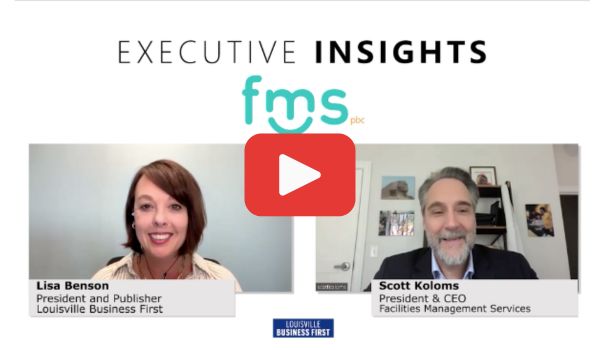In my journey as CEO of FMS, I’ve come to understand the profound impact of positive leadership on organizational success. It’s not just about making decisions or achieving targets; it’s about leading with purpose and cultivating a culture of empathy, collaboration, and growth.
In May, I received the Positive Leadership Award from the University of Louisville College of Business. I’m very proud of this award because it demonstrates our commitment to this approach. I recently sat down with Louisville Business First to share my thoughts on the key components of this concept.
Click here to watch the full interview >>
Here are a few things I’d like to reiterate from my conversation with Lisa.
#1: Have Humility & Empathy
One of the most powerful tools in a leader’s arsenal is humility. It’s about recognizing that we don’t have all the answers and being open to learning from others. Empathy is equally important – it’s about putting yourself in someone else’s shoes and truly understanding their perspective. By approaching challenges with curiosity rather than defensiveness, we can foster a culture of trust and respect within our teams.
#2: Prioritize Relationships
At the core of effective leadership is the ability to build meaningful relationships. Whether it’s with employees, customers, or stakeholders, investing in relationships pays dividends in the long run. Research backs this up, showing that strong interpersonal connections are crucial for organizational success and employee engagement.
#3: Lead with Purpose
Purpose-driven leadership is about more than just profitability – it’s about making a positive impact on the world around us. By aligning our actions with a higher purpose, we can inspire others to join us in our mission and create lasting change. Studies have shown that purpose-driven companies tend to outperform their peers, attracting top talent and driving innovation.
#4: Create a Values-Driven Culture
Core values serve as the foundation of organizational culture. By clearly defining our values and integrating them into everything we do, we can create a culture that reflects our shared beliefs and aspirations. This not only strengthens employee morale but also enhances organizational performance.
#5: Encourage Open Communication
Effective communication is key to building trust and transparency within teams. By fostering an environment where everyone feels heard and valued, we can unlock the full potential of our organization.
#6: Embrace Growth and Adaptation
Leadership is a journey of continuous growth and adaptation. It’s about embracing change and learning from our experiences. By adopting a growth mindset and seeking feedback from others, we can continually improve our leadership effectiveness and resilience.
As leaders, we have the opportunity to make a positive impact on the lives of those around us. By leading with purpose, empathy, and humility, we can create organizations that not only thrive but also make the world a better place.
